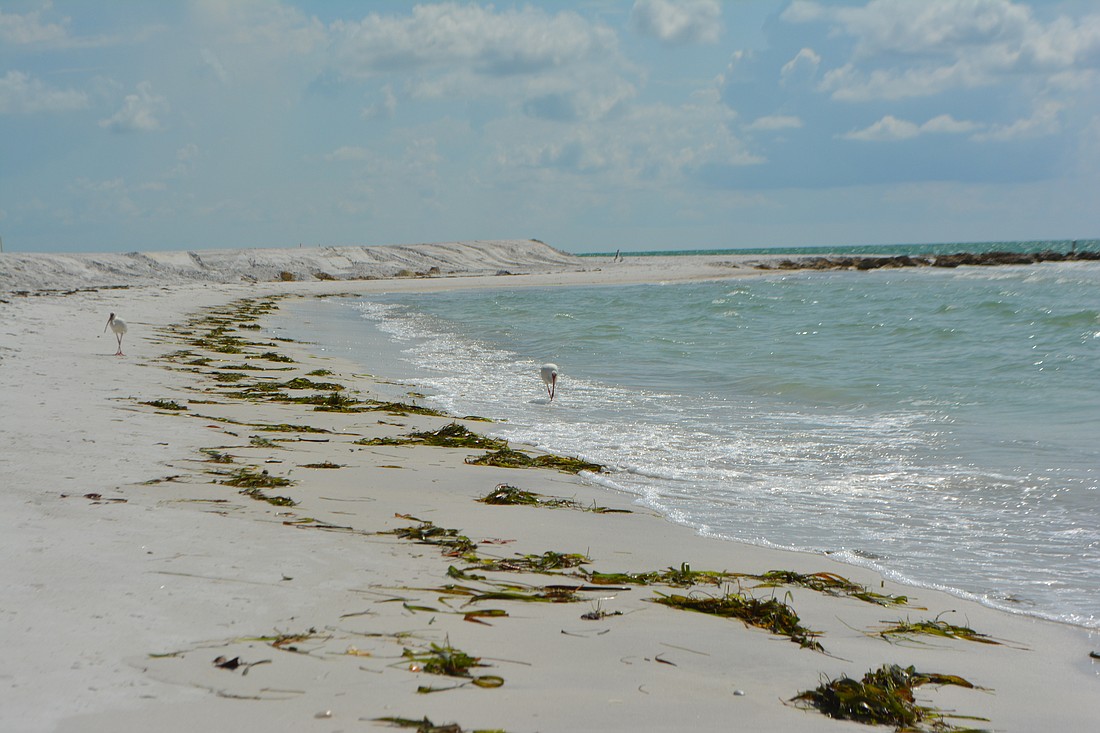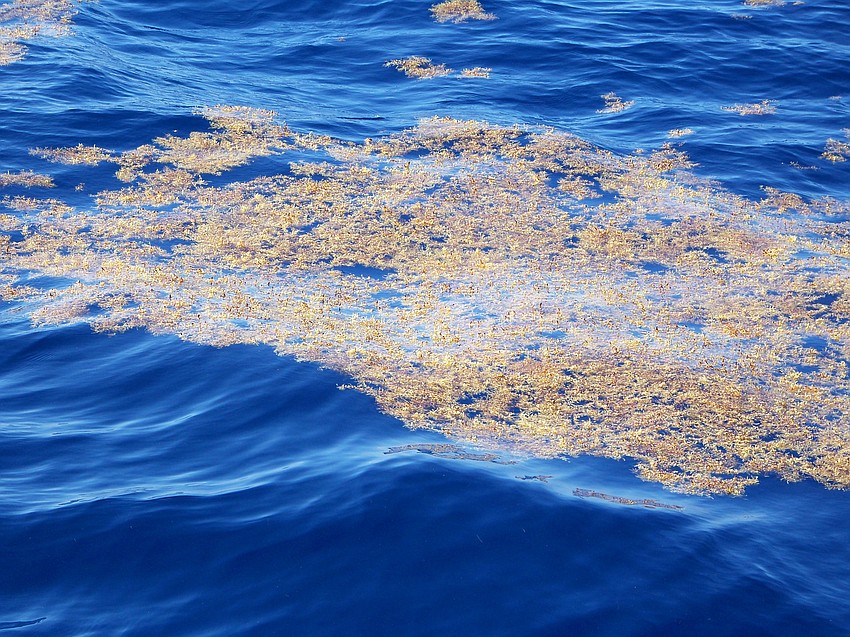- July 26, 2024
-
-
Loading

Loading

Even as the 5,000-mile wide sargassum inches toward landfall on the Florida Keys, Sarasota is not quite out of the woods — or seaweed, yet.
Sargassum is a genus of large, brown seaweed that floats in island-like masses and never attaches to the seafloor, according to the National Oceanic and Atmospheric Administration.
Bob Bunting, CEO of the Climate Adaptation Center, compared sargassum to bubblewrap because of the presence of air bubbles in it that keep it floating, but it can be popped, sending the mass to the ocean floor. Once it sinks to the ocean floor, it serves as a provider of carbon to fish and invertebrates in the deep sea.
Even though what is being called the “Great Atlantic Sargassum Belt” only recently floated into headlines, the seaweed blobs are naturally occurring. What makes this occurrence special is its size. A 5,000-mile-long grouping has been making its way onto Florida shores.

“There’s always been some,” Bunting said. “I remember swimming in it as a kid even up in New England at times. It would come and go; you’d see it here and there. It’s not like it hasn’t been around. The quantity of it now is enhanced by the fertilizers and CO2, which we are putting into the atmosphere as we live.”
The sargassum feeds off carbon dioxide, which is at levels that have not been seen in hundreds of thousands of years.
“That’s part of the reason why the atmosphere is warming, but it’s also part of the reason the sargassum is having such a field day,” Bunting said.

Another important note is that while the current sargassum mat is measured at about 5,000 miles long, it is not one continuous thing but rather “blobby.”
The sargassum belt, which is the largest in record this early in the year, is hitting Key West. With hurricane season approaching, the Sarasota area is fully in the clear from the belt hitting our shores if a hurricane reaches the area early in the season. Sargassum is largely seasonal with its peak occurring in June, Bunting said.
“The problem is it’s so prolific that when it washes up on a beach it can pile up several feet deep,” he said. “It’s a living thing, so it decomposes, and when it does, it stinks to high heaven.”
The hydrogen sulfide emitted when it decomposes causes a rotten egg smell and in large quantities can be a lung irritant. It does not have the same toxicity as the harmful algal blooms of red tide, but the smell alone makes it unpleasant.
Sargassum can have its benefits, too. Because it feeds on carbon dioxide, it also helps regulate the amount in the atmosphere.